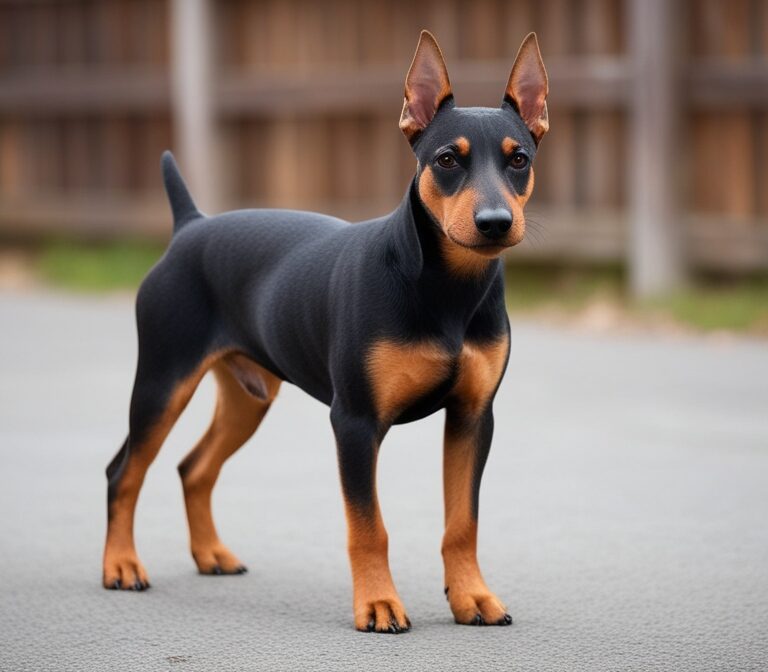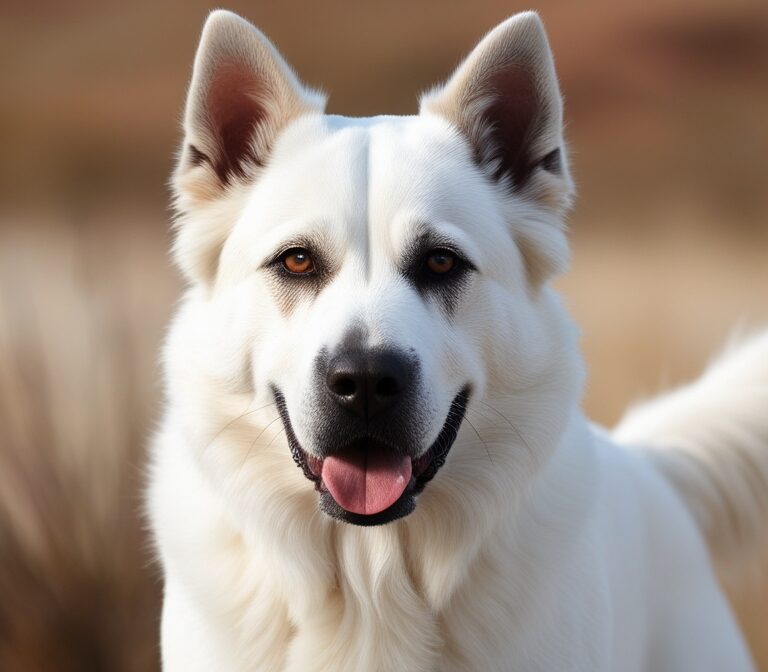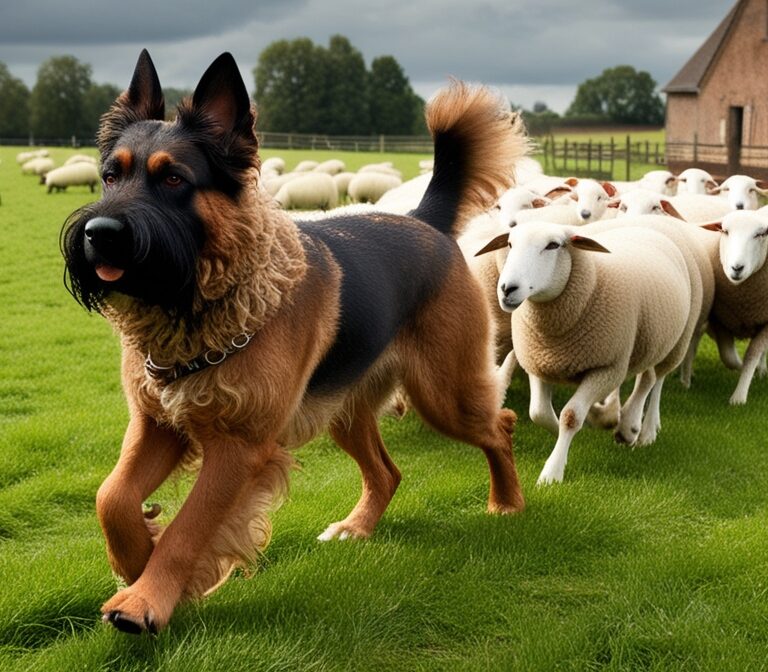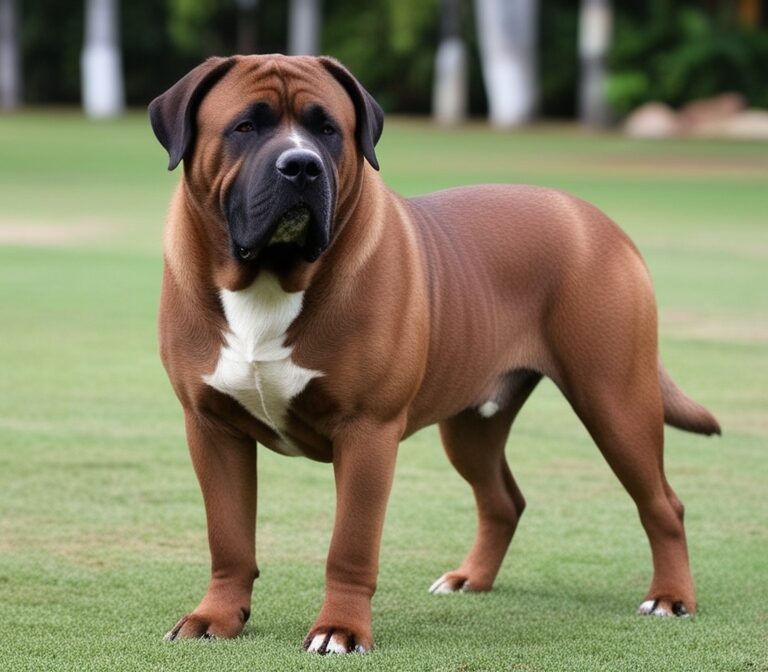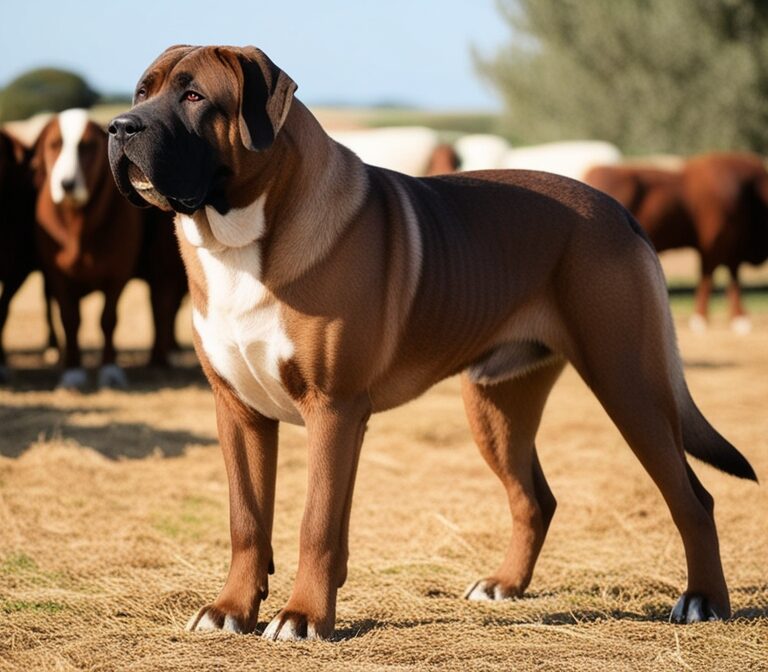The Ultimate Guide to the Puli Dog: History, Care, and Characteristics
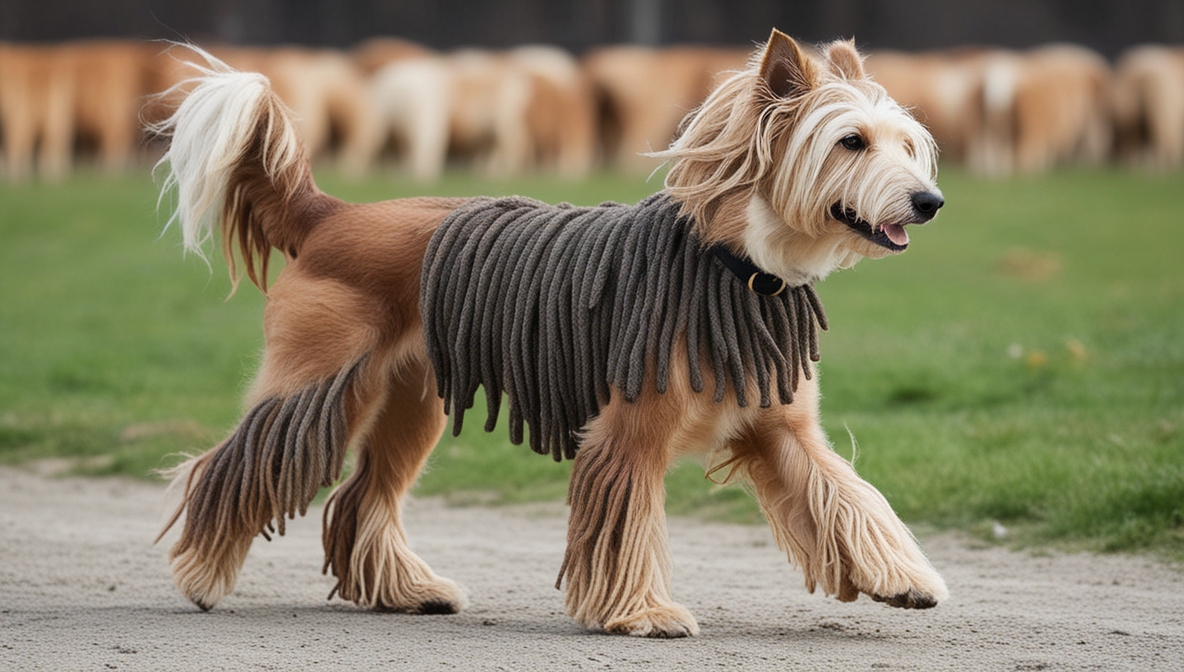
What is a Puli Dog?
The Puli dog is a medium-sized herding breed originating from Hungary, best recognized for its distinctive corded coat that resembles natural dreadlocks. This coat is not only visually striking but also serves a functional purpose—protecting the dog from harsh weather conditions while working in open fields. A Puli’s fur naturally forms cords as it grows, giving the breed its iconic mop-like appearance.
The breed belongs to the herding group, officially recognized by the American Kennel Club (AKC), the Fédération Cynologique Internationale (FCI), and various national kennel clubs. Pulis are renowned for their agility, intelligence, and energetic nature, making them excellent workers and loyal companions.
As a livestock guardian and herding dog, the Puli has been bred for centuries to manage flocks of sheep across Hungary’s plains. Despite its compact size compared to other herding dogs like the Komondor, the Puli is known for its endurance, speed, and fearless personality.
Today, the Puli thrives as both a working dog and a family pet. Families often admire their loyalty and playful temperament, while farmers and ranchers still value their instinctive herding abilities.
Key highlights of the Puli dog breed include:
- Origin: Hungary
- Group: Herding
- Average Height: 16–17 inches (40–43 cm)
- Average Weight: 25–35 pounds (11–16 kg)
- Lifespan: 12–16 years
- Temperament: Loyal, Intelligent, Energetic, Protective
This breed is not for everyone. A Puli requires regular exercise, mental stimulation, and coat maintenance. However, for the right owner, the Puli becomes a devoted, intelligent, and entertaining companion who thrives in an active environment.
History and Origin of the Hungarian Puli
The Hungarian Puli has a rich history that dates back over 1,000 years, with evidence suggesting the breed was introduced to Hungary by the Magyars, nomadic tribes who migrated from Central Asia. These early tribes relied on the Puli as an essential partner for herding sheep and cattle across the Carpathian Basin.
Historical records show that by the 9th century, Pulis were already recognized as skilled herding dogs in Hungary. Their small yet agile build allowed them to move quickly and efficiently, darting around livestock with precision. Farmers prized them for their problem-solving skills and ability to manage large flocks independently.
The corded coat of the Puli was developed as a natural adaptation. The unique fur acted as a protective barrier against extreme weather conditions, such as snow, rain, and intense sun, as well as against bites from predators like wolves. This made them particularly well-suited for open pastures in Hungary.
By the Middle Ages, Pulis had become a well-established part of Hungarian rural life. They were often paired with the larger Komondor, another Hungarian breed, where the Komondor guarded livestock from predators while the Puli managed daily herding.
The breed nearly faced extinction during the World Wars, as Hungary experienced agricultural decline and fewer farmers relied on working dogs. However, dedicated Hungarian breeders preserved the lineage, and in the 20th century, kennel clubs across Europe and the United States formally recognized the Puli breed standard.
Today, the Puli is celebrated not only as a working herding dog but also as a national treasure of Hungary, symbolizing the country’s agricultural and cultural heritage. Its unique coat and ancient lineage ensure that the Puli remains one of the most distinctive breeds in the dog world.
Unique Corded Coat Explained
The corded coat of the Puli dog is its most defining feature, often mistaken for dreadlocks or mop-like strands. Unlike other breeds with long or curly hair, the Puli’s fur naturally mats together as it grows, forming dense cords that cover the entire body. This corded coat is not an accident of grooming but a genetic trait specifically bred for function.
Historically, the cords provided all-weather protection. Hungary’s climate ranges from cold winters to hot summers, and the Puli’s coat acted as a thermoregulator. The outer cords protected against rain, snow, and wind, while the undercoat trapped warmth in winter and allowed ventilation in summer. Additionally, the thick cords offered natural armor against bites from wolves and other predators while herding livestock.
The cords typically begin forming when a puppy reaches 8–10 months of age. At this stage, the coat shifts from fluffy puppy fur to a wool-like texture that begins to lock together. Owners usually assist the process by separating cords to prevent matting. Left unattended, the cords can grow excessively long and drag on the ground, which is undesirable for working dogs.
A full-grown Puli coat can take up to four years to develop fully, creating a visually striking appearance that sets them apart from nearly every other breed. While the coat is hypoallergenic compared to heavy-shedding breeds, it requires regular maintenance to keep cords clean, separated, and free from debris.
In modern settings, many pet owners trim their Puli’s cords for easier grooming and comfort. Show dogs, however, often retain the traditional long cords to highlight the breed’s heritage and unique identity.
This coat is not only beautiful but also a symbol of survival and tradition, tying the Puli to its historical role as a resilient herding dog across Hungarian farmlands.
Size, Height, and Weight Standards
The Puli dog is considered a medium-sized breed, though its corded coat often makes it appear larger than it actually is. Underneath the layers of cords lies a compact, muscular, and agile body designed for herding agility rather than brute strength.
Breed standards, as outlined by the American Kennel Club (AKC) and the Fédération Cynologique Internationale (FCI), specify the following size ranges:
- Height:
- Males: 16–17 inches (41–43 cm)
- Females: 15–16 inches (38–41 cm)
- Males: 16–17 inches (41–43 cm)
- Weight:
- Males: 30–35 pounds (13–16 kg)
- Females: 25–30 pounds (11–14 kg)
- Males: 30–35 pounds (13–16 kg)
Despite being relatively small compared to other herding breeds like the Komondor or Border Collie, the Puli’s build emphasizes endurance and agility. Their slightly rectangular body shape allows for quick, nimble movements across pastures.
One fascinating trait is their lightweight yet sturdy frame, which enables them to leap high when herding sheep. Farmers often described Pulis as appearing to “bounce like a ball” across fields, darting in and out to guide livestock efficiently.
The Puli’s size makes it adaptable for modern households as well. Unlike larger farm dogs that require expansive land, the Puli can adjust to smaller living spaces such as suburban homes or apartments, provided they receive adequate exercise.
In essence, the Puli’s physical size is a balance between utility and versatility, making it both a working dog and a manageable family pet without the bulk of larger herding breeds.
Common Coat Colors in the Puli Breed
The Puli breed is best known for its black corded coat, but breed standards allow several distinct colors. Coat color has historically played a role in both functionality and breeding practices.
Recognized coat colors include:
- Solid Black (most common and iconic)
- White (rarer, but still recognized)
- Gray (appearing with age or natural variation)
- Fawn / Masked (lighter coat with a darker facial mask)
In traditional Hungarian farms, black was the preferred coat color because it made the Puli easier to distinguish from sheep in the fields. A black-coated herding dog stood out against white flocks, allowing farmers to monitor movements quickly.
White-coated Pulis, although rare, are sometimes confused with their larger cousin, the Komondor, which also has a corded white coat. Gray coats often develop naturally as dogs age, with black Pulis gradually lightening over time.
Interestingly, while fawn-colored Pulis exist, they are not as commonly bred, and many kennel clubs do not prioritize this shade in show standards.
The cords themselves may appear shiny or matte, depending on grooming and coat health. Proper nutrition and coat care influence color vibrancy, especially in darker-coated Pulis.
For potential owners, coat color does not affect temperament or ability. However, grooming lighter-coated Pulis can be more challenging because dirt and stains show more easily, requiring frequent maintenance.
Ultimately, the Puli’s coat colors are not just about aesthetics—they reflect historical breeding practices, working utility, and cultural preferences across centuries.
Distinct Features That Set the Puli Apart
Beyond its corded coat, the Puli dog possesses several distinct physical and behavioral traits that make it truly unique among herding breeds.
Key Physical Features:
- Eyes: Dark, almond-shaped eyes are usually hidden beneath cords, giving the Puli a mysterious expression. Despite being hidden, their vision remains sharp, aiding in quick herding movements.
- Ears: Medium-sized, V-shaped ears are set high and blend into the coat, often appearing almost invisible under cords.
- Tail: A curled, bushy tail carried over the back, typically blending with the body’s cords.
- Body: Compact and muscular, emphasizing agility over brute strength.
- Gait: A springy, light-footed gait that allows the Puli to move quickly and change direction rapidly while herding.
Behavioral Features:
- Energetic Agility: Known as “the acrobat of the dog world,” the Puli has remarkable athleticism.
- Protective Instincts: Even though medium-sized, Pulis act as alert watchdogs, barking at unfamiliar sounds.
- Adaptability: They thrive both as working farm dogs and as urban companions when given exercise and mental stimulation.
The combination of appearance and function is what makes the Puli stand out. Few breeds balance such a practical coat design with an athletic, agile frame and a keen, intelligent temperament.
This unique blend ensures that the Puli remains both a heritage herding breed and a modern-day companion dog, admired for its resilience and individuality.
Is the Puli Dog Right for You?
The Puli dog is not just another herding breed—it is a living piece of Hungarian heritage with centuries of history rooted in agriculture, resilience, and loyalty. Recognized worldwide for its distinctive corded coat, the Puli has evolved from a hardworking sheepdog of the Hungarian plains to a cherished family companion admired for its intelligence and playful spirit.
Choosing a Puli requires commitment and understanding. This is a breed that thrives on mental stimulation, physical activity, and human companionship. If left unstimulated, a Puli can become restless or even mischievous, using its cleverness in ways that challenge inexperienced owners. However, when properly trained, exercised, and socialized, the Puli becomes an exceptionally devoted, loyal, and affectionate family member.
The corded coat, while stunning, demands consistent grooming and patience. Owners must be prepared for the maintenance routine—separating cords, keeping the coat clean, and managing its length. For those willing to dedicate the time, the reward is a hypoallergenic, low-shedding companion with a coat unlike any other in the canine world.
In terms of environment, the Puli adapts surprisingly well. While it was bred for open fields, it can also flourish in apartments and suburban homes, provided daily exercise and playtime are non-negotiable. Active owners, families with children, and households that enjoy dog sports or outdoor adventures will find the Puli to be an enthusiastic partner.
Health-wise, the breed is generally robust, with a lifespan of 12–16 years, but prospective owners should stay mindful of hip dysplasia, eye conditions, and coat care challenges. Responsible breeding and regular veterinary check-ups ensure a long, healthy life.
Ultimately, the Puli is best suited for individuals or families who:
- Value a smart, energetic, and agile companion
- Enjoy investing time in training and grooming
- Want a dog that combines working instincts with family loyalty
- Appreciate a breed with deep cultural and historical roots
If these qualities align with your lifestyle, the Puli is more than just a pet—it’s a faithful partner, an entertaining family member, and a guardian of tradition. For centuries, it has balanced work, play, and protection, and today, it continues to enchant dog lovers worldwide with its distinct look, sharp mind, and unwavering devotion.
In conclusion, the Puli dog is right for those who embrace its energy, respect its heritage, and are ready for the joyful responsibility of owning one of the most unique and spirited breeds in the canine world.
